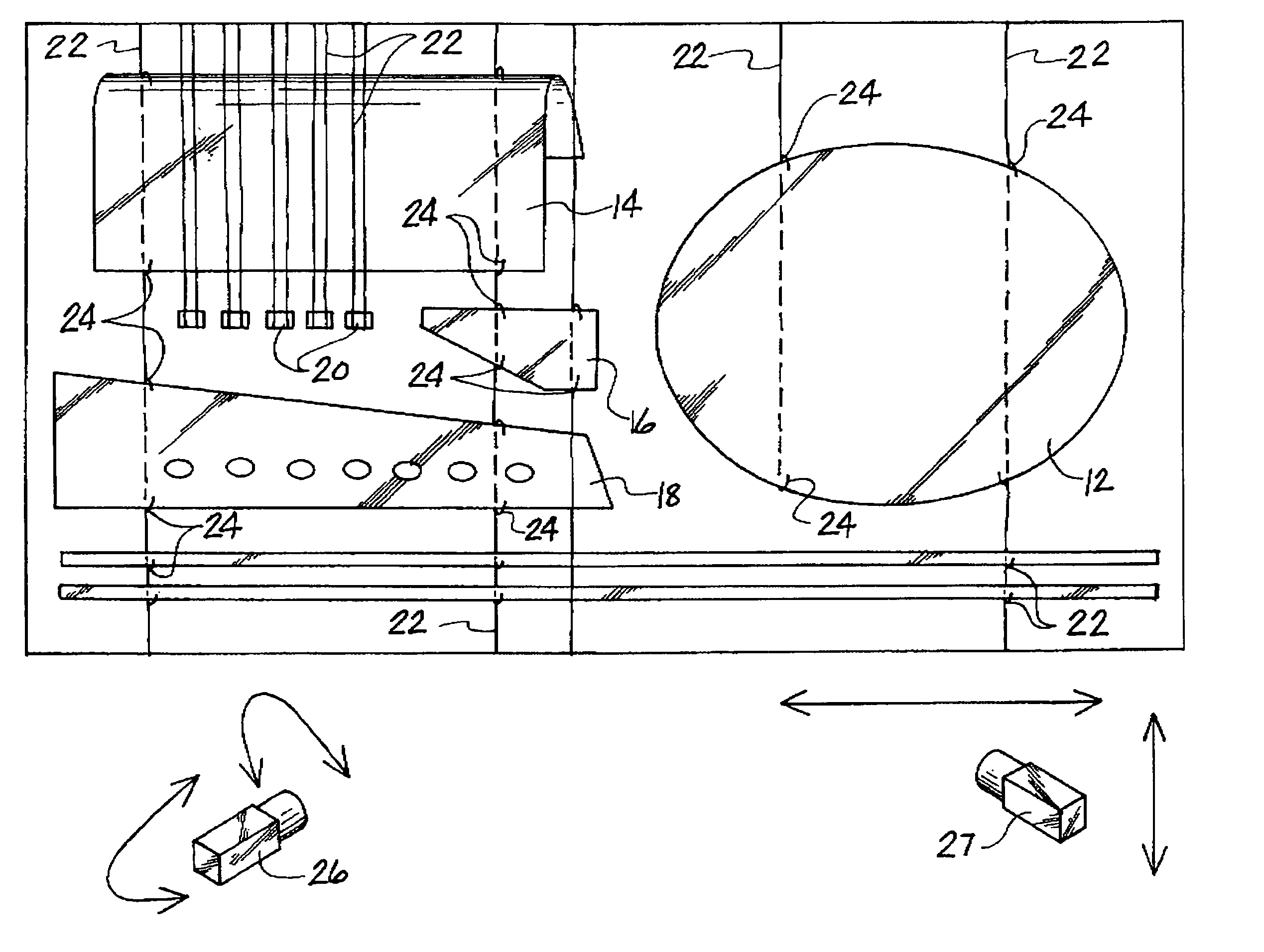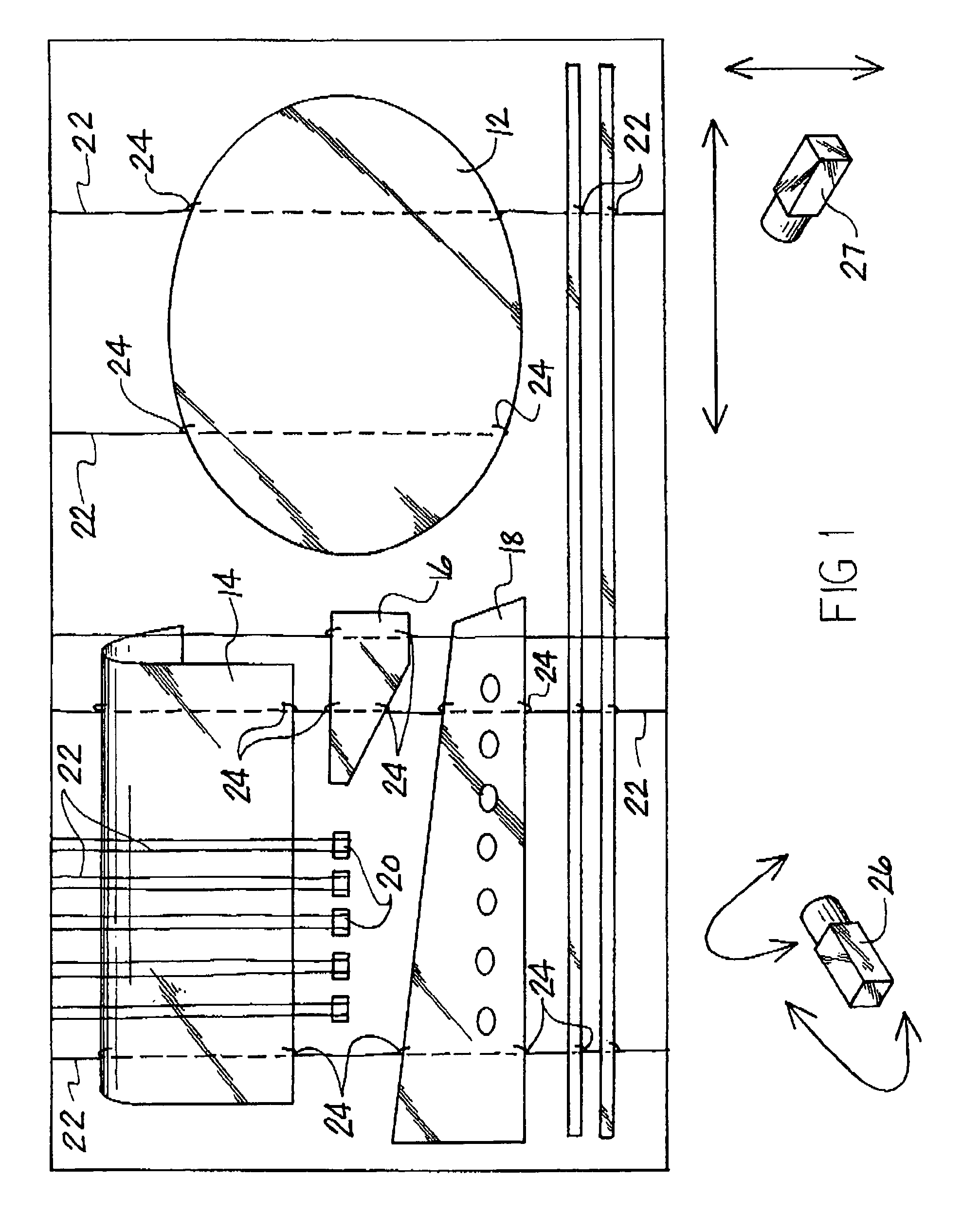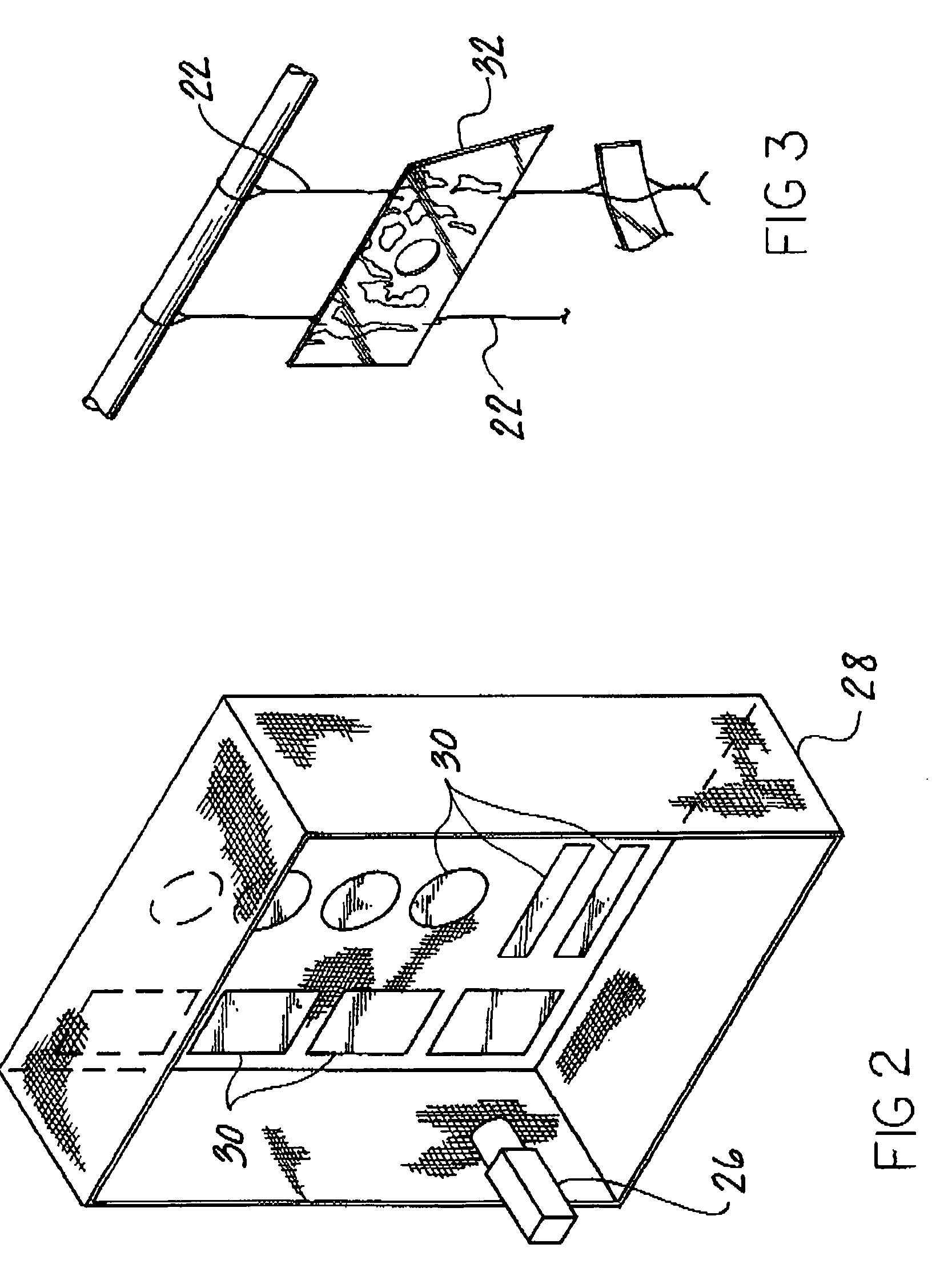Surface contamination detection method and apparatus
a contamination detection and surface technology, applied in the direction of optical radiation measurement, instruments, x/gamma/cosmic radiation measurement, etc., can solve the problems of no water film hazardous to humans, and water film will break around the contaminated area, so as to improve the contaminated area that is thinly wet or dry, and the inspection speed is fast.
- Summary
- Abstract
- Description
- Claims
- Application Information
AI Technical Summary
Benefits of technology
Problems solved by technology
Method used
Image
Examples
Embodiment Construction
[0017]FIG. 1 is a symbolic representation of the supporting frame 10 which is supporting a variety of aircraft skins and parts 12, 14, 16, 18, and 20. The various parts are suspended within frame 10 by a series of wires 22 which are typically twisted around the part to support same, such as portions 24 which engage the part. Various curved shaped parts, such as part 14, can be examined by the present inspection process by infrared cameras 26 and 27 which have sufficiently focal distance to examine a relatively large area without movement. Cameras 26 and 27 can be fixed mounted on a pan / tilt head so as to scan the entire length of frame 10 which can be dimensioned over 30 feet in length. One of the cameras 26 or 27 can be positioned on the opposite side of support frame 10 so as to examine both sides of the part simultaneously. Frame 10 can be made of tubular steel as well as other materials, which could be impervious to various alkaline and acid dip tanks. The frames 10 are lifted a...
PUM
 Login to View More
Login to View More Abstract
Description
Claims
Application Information
 Login to View More
Login to View More - R&D
- Intellectual Property
- Life Sciences
- Materials
- Tech Scout
- Unparalleled Data Quality
- Higher Quality Content
- 60% Fewer Hallucinations
Browse by: Latest US Patents, China's latest patents, Technical Efficacy Thesaurus, Application Domain, Technology Topic, Popular Technical Reports.
© 2025 PatSnap. All rights reserved.Legal|Privacy policy|Modern Slavery Act Transparency Statement|Sitemap|About US| Contact US: help@patsnap.com



